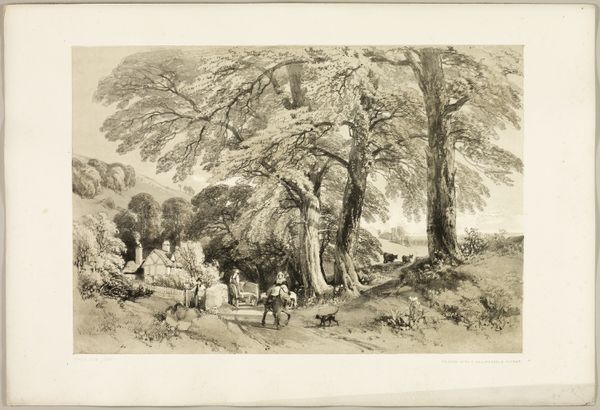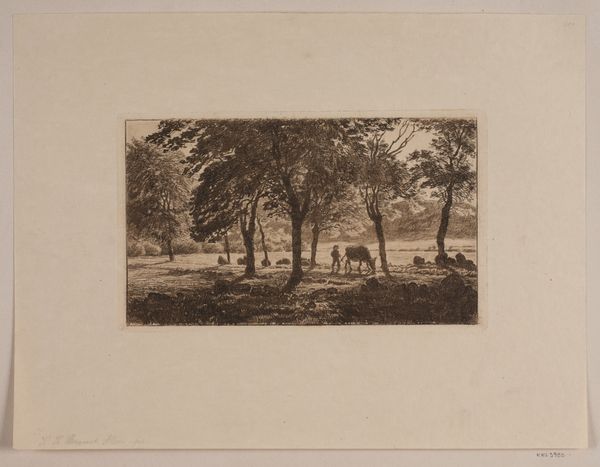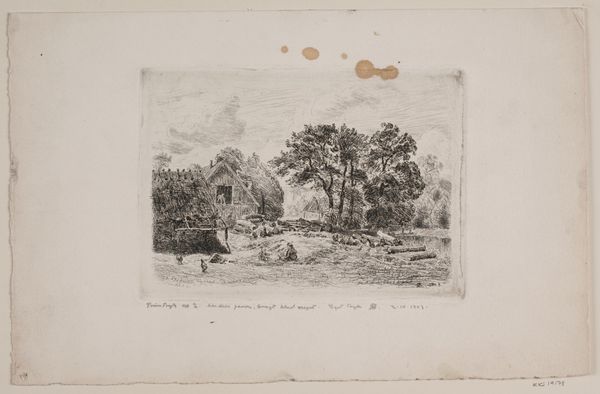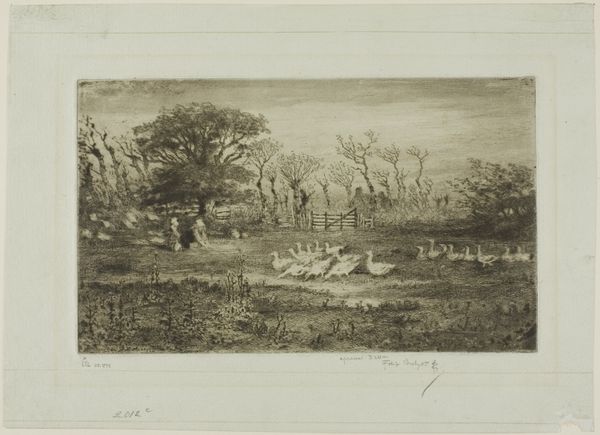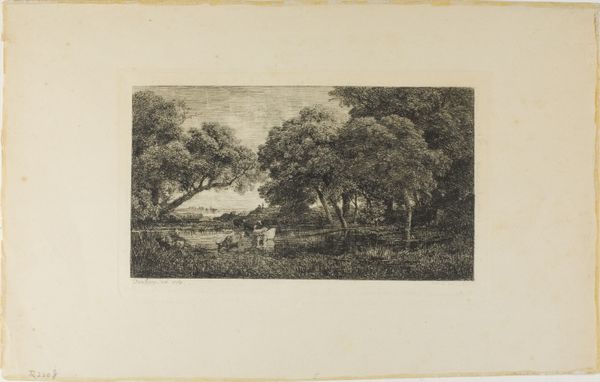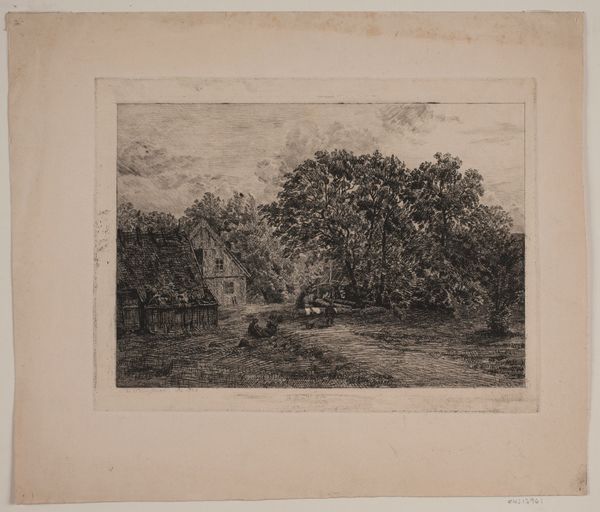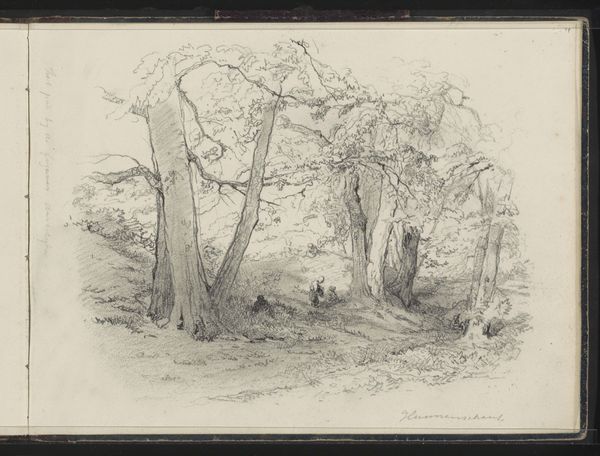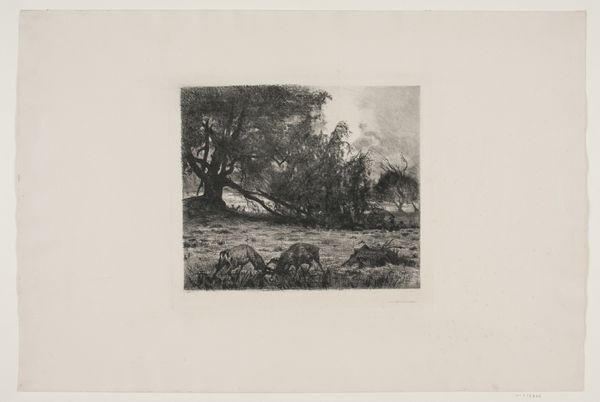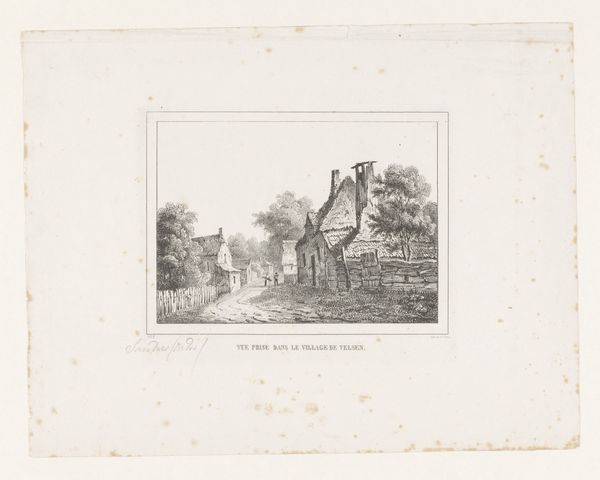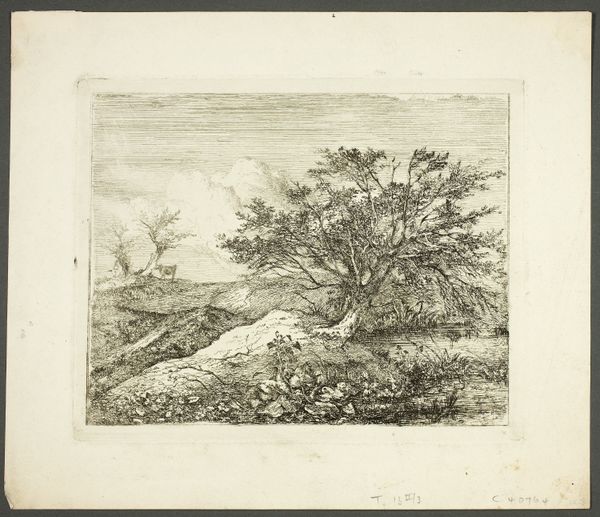
print, etching
# print
#
etching
#
landscape
#
figuration
#
realism
Dimensions: 230 mm (height) x 260 mm (width) (Plademål)
Editor: Here we have Thorvald Niss's "Efterår. Kæmpende hjorte", or "Autumn. Fighting Deer," likely created between 1842 and 1905. It’s a print, an etching on paper. It feels...raw, almost elemental in its depiction of this struggle. What stands out to you when you look at this piece? Curator: The etcher's craft is prominent. Look at the network of lines that form the landscape, each scratch marking the physical labor required to produce this image. It emphasizes the artist’s hand, his effort etched directly into the metal plate. Do you think the choice of etching, as opposed to another printmaking method, influences the work’s message? Editor: It definitely feels less… polished than some other prints I’ve seen. It’s interesting how the rough texture adds to the drama. So, you see the labor and materials as central to understanding this? Curator: Absolutely. The consumption of such an image within a rising middle class is crucial. This connects directly to land use, hunting practices, and the burgeoning Danish art market. The “realism” also hints at larger concerns regarding humans relationship with nature. Editor: It's funny, I didn’t initially think about the social aspects, but the materiality leading into those consumption patterns is a neat perspective. Thanks! Curator: Precisely. This close looking at the 'means of production' lets us reconsider even a pastoral scene like this through a different, and socially informed, lens. I've learned a great deal by re-examining this with you.
Comments
No comments
Be the first to comment and join the conversation on the ultimate creative platform.
